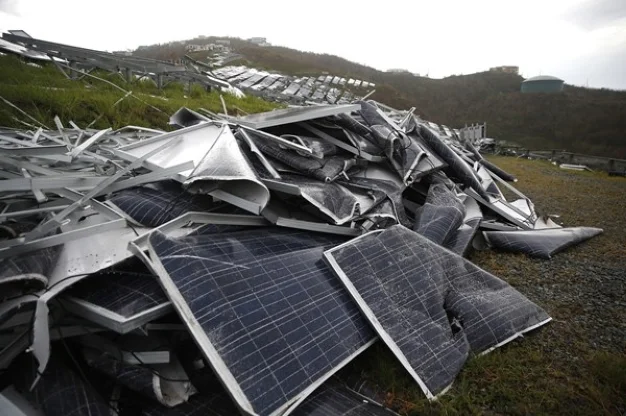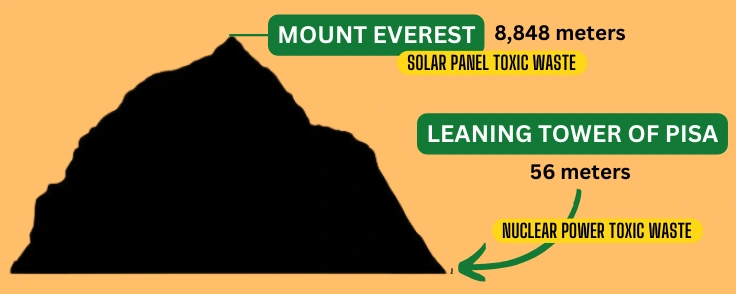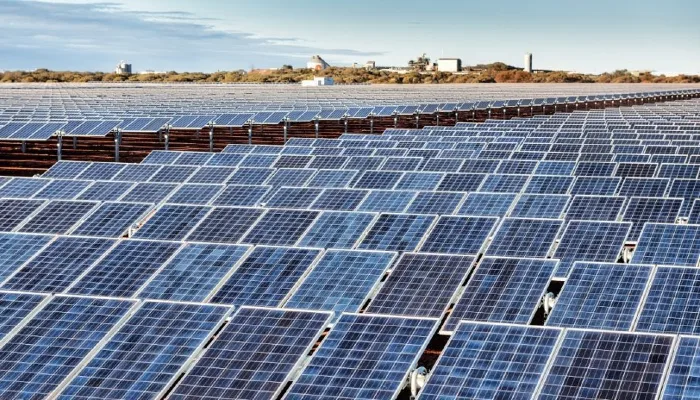As the sun sets on the DeGrussa solar and battery hub in the goldfields of Western Australia, it’s not just the end of a chapter for a trailblazing renewable energy project. This closure marks a pivotal moment in the global conversation about sustainability, particularly in the U.S., where the burgeoning solar energy sector must confront the looming shadow of waste management.
A Shining Example Dimmed: DeGrussa’s Sunset After 7 Years
In the heart of Western Australia’s goldfields, the DeGrussa solar and battery hub, a joint venture by French renewable energy giant Neoen and Sandfire Resources, a West Australian mining company, was a beacon of innovation. Launched in June 2016, this largest integrated off-grid solar and battery storage facility in Australia was a bold experiment in renewable energy.
Comprising 10.6 MW of PV solar panels and a 6 MW lithium-ion battery energy storage system, supplemented by a diesel-fired generator, DeGrussa was a testament to sustainable possibilities. It illuminated the path, supplying nearly 20% of the mining operation’s annual power requirements and reducing its emissions by about 12,000 tons of carbon dioxide annually.
The initial 5.5-year agreement with Sandfire Resources was extended as the mining operation outlived its expected closure in 2021. However, with the mine’s recent cessation, the DeGrussa project has reached its twilight after seven years of operations.
Dismantling and Beyond: The Sustainability Dilemma Based On ‘Hope’
The decision by Neoen to dismantle the facility underscores a critical aspect often overlooked in the rush to adopt renewable energy: the afterlife of these massive installations. While Neoen hopes not only to remove the solar panels but also to rehabilitate the entire site, no details have been released.
This action poses a vital question for American solar companies and policy-makers: How do we handle the waste generated by renewable energy projects?
Climate Energy Finance Director Tim Buckley remarked on the closure, “There is no surprise there,” underscoring that the end-of-life for the DeGrussa project was anticipated. Despite its relatively short lifespan, Buckley hailed the project as a “brilliant success,” lauding its contribution to Australia’s renewable energy journey.

DeGrussa’s Legacy in Renewable Energy
Funded by AUD 20.9 million ($13.9 million) from the Australian Renewable Energy Agency (ARENA) and AUD 15 million ($9.8 million) in debt finance from the Clean Energy Finance Corp. (CEFC), DeGrussa catalyzed a significant shift in solar technology’s role in Australia’s energy mix. “The capacity, the scale, the technology improvements, the software integration, all the learnings that have gone on, DeGrussa was a core part of the early learning by doing,” Buckley stated.
The project’s influence extends beyond its physical lifespan, providing crucial insights into meeting off-grid energy needs. Buckley emphasized the importance of this learning process, which major Australian companies like BHP and Rio are now adopting.

End-Of-Lifecycle Solar Waste Is A Growing Problem With No Legit Solution
Even in its dismantling, DeGrussa offers lessons. Neoen is exploring opportunities to repurpose the 34,080 solar panels and other infrastructure. “Our preference is for the solar panels to be re-used as they remain in good condition,” the company noted, reflecting a commitment to finding a second life for the solar panels and components such as inverters, transformers, and the battery pack.
This initiative is a clarion call for American energy sectors to prioritize sustainability in not just the creation, but also the conclusion of renewable energy projects. The full dismantling and repurposing process at DeGrussa is expected to be completed by the end of 2024.
While the company and the Australian government have publicly stated their ‘hopes’ and ‘plans’ to recycle and/or repurpose the solar panels and infrastructure, there appears to be no details or specifics. This isn’t surprising as many solar energy companies have made similar claims publicly only to have their solar panels end up in landfills.
The DeGrussa solar project’s closure isn’t just a single event; it’s a microcosm of a broader, global issue: the burgeoning challenge of solar energy waste. This issue is particularly acute in the United States, which has been a forerunner in embracing solar energy but now faces the daunting task of managing its aftermath.
Solar panels have a lifespan of about 25 years. With the solar boom of the early 2000s, a wave of these panels is nearing the end of its life. The International Renewable Energy Agency (IRENA) estimates that by 2050, the world could be dealing with 78 million metric tons of solar panel waste. To put this into perspective, that’s equivalent to about 19 times the weight of the Golden Gate Bridge or about the size of Mount Everest.

In the U.S., the Environmental Protection Agency’s (EPA) figures reveal a troubling lack of infrastructure to handle this impending waste. By 2035, the U.S. is projected to accumulate around 1 million metric tons of solar panel waste, growing to nearly 10 million metric tons by 2050. This rapid accumulation is outpacing the development of recycling and disposal solutions.
The issue is compounded by the composition of solar panels, which contain potentially hazardous materials like lead and cadmium. The challenge lies in safely extracting and repurposing these materials. Currently, recycling processes can recover about 80% of a panel’s materials, but the remaining 20%, often containing toxic substances, poses a significant environmental hazard.
Now before you get excited at the prospect of recycling up to 80% of each solar panel, you’ll want to brace for yourself for the hard economic reality of the industry. Very few solar panels are recycled because of the overall costs involved in the process.
More To Discover
- The US Food Industry Faces Pressure to Reveal the Truth About Their Products
- Rising Ocean Heat Waves Decimate Marine Life As Global Crisis Continues
- Greenhushing Trend Surges: Companies Shy Away from Touting Environmental Progress, Study Finds
- Glitter Ban: Sparkling Menace to Microplastic Pollution Crisis
Simply put, it’s cheaper for companies, and governments, to just trash them in a landfill and walk away.
As the U.S. continues its transition to renewable energy, addressing the solar waste challenge becomes imperative. Without sustainable end-of-life strategies for solar panels, the green energy revolution risks creating a new environmental burden, contradicting its fundamental ethos. The solar industry must innovate in recycling technologies and develop comprehensive waste management policies to ensure that the promise of a cleaner, sustainable future doesn’t cast a shadow of waste and pollution.





















